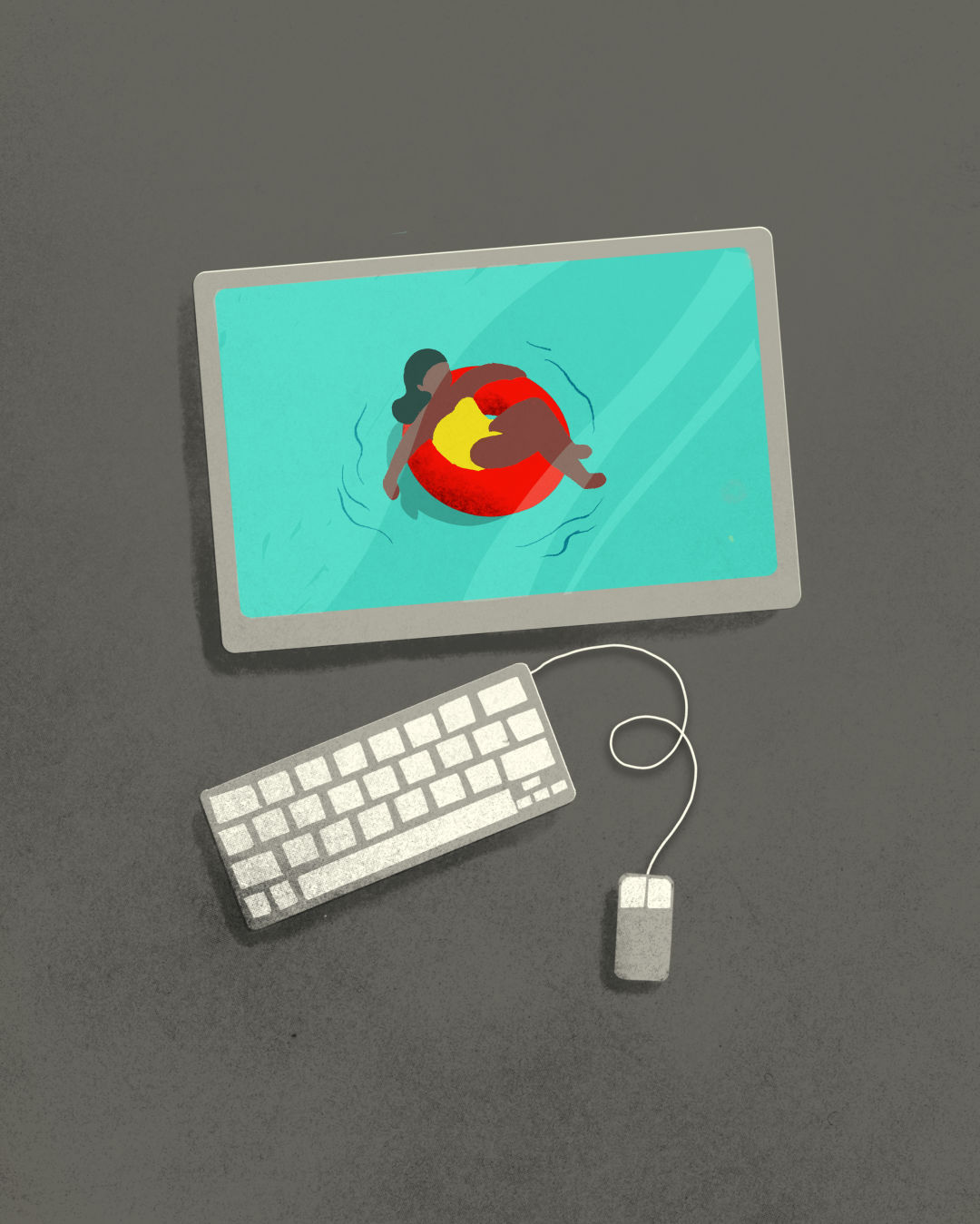When 'Back to School' Still Means Opening Up a Laptop

Getting comfortable with virtual-only school.
Image: Michael Novak
For hundreds of thousands of Oregon students and their weary caregivers, the end of Zoom school is cause for the noisiest of celebrations.
But for a small but significant sliver of students and families, the great education experiment of the 2020–2021 school year was a revelation. Free of the microaggressions of a traditional classroom—of bullying over race or gender or sexual orientation, of distractions from unfocused classmates, of the one-size-fits-all schedule of school, and perhaps most immediately, free of fear of the long arm of COVID-19 and any yet-unknown aftereffects—they’ve grown accustomed to online school, and aren’t ready to turn back.
In some jurisdictions, they’d have no choice. New York City shut down its virtual school options for this fall; New Jersey, Massachusetts, Illinois, and Florida have all said online school will be very limited in scope this September.
In Oregon, though, where 78 percent of kids finished out the 2020–2021 school year in full or part-time virtual school, a handful of local districts either already had full-time online options in place or are starting them up to accommodate families that want to remain online. (There have been statewide virtual charter schools in place for years, but there are legislatively enforced caps on how many students from individual districts can enroll in them.)
Portland, the state’s largest public school district, will roll out its first all-virtual K–12 school in September. In building it, the district doesn’t have to look far for models: online-only schools are already up and running in the populous, tech-forward western suburbs of Beaverton and Hillsboro.
Beaverton’s Flex Online School was originally intended an option for kids who couldn’t find their fit in the traditional public school system. But in summer of 2020, when it became clear kids wouldn’t be going back into buildings that fall, there was an enormous rush of interest, Principal Paul Ottum says. The school expected 700 applicants and received five times that amount; eventually, about 1,200 kids enrolled for 2020–2021.
“It’s amazing how many teachers we have who were afraid of this format but willing to give it a try, and they found it to be a refreshing change, because they can focus their attention individually on a student, because they are not distracted by 25 others in the same room,” Ottum says.
Two of Melissa Gatchell’s kids, both boys, one in middle school and one in high school, opted into Flex for the year.
“We didn’t want to be part of the chaos of, ‘Are we going back or are we not? This week we’re doing this—no, wait, we’ve moved it two weeks. We’re hybrid—no, we’re completely remote,” she says. “We thought Flex would be consistent—they had a real online curriculum.”
Gatchell says her sons’ teachers were responsive and communicative, and her older son loved being able to set his own pace, while her younger son is set to return to their neighborhood middle school next year.
“This would not have been an option for my (10th grade) son otherwise—he would have been pigeonholed into a normal high school experience and he is more of an introvert,” she says. “He’s super happy—he’s going to get a job, he does everything on his own time.”
The school is not a fit for every kid, though, says Denise Putney, whose middle schooler also spent the 2020–2021 school year at Flex and will return to his local school this fall. The year worked out for her family, she says, because her son was also in a pod with friends, with a hired teacher to supervise, and one of the parents was able to turn their playroom into a makeshift school room.
“We had hoped that there would be more in-person instruction, and there is not,” she says. Instead of whole-class meetings and live instruction delivered over the computer, FLEX teachers give homework assignments and feedback, and make themselves available for individual consultations with families daily as needed, though younger kids may have more all-class virtual meet-ups and small groups.
“You could get on the office hours and see them, but why not a session getting everyone on for those who are available? Even if it was prerecorded? At least seeing a face with an explanation?” Putney asked. “They need to ramp it up another level and truly make it online learning. Seeing people is what kids need, and as a teacher you need to see the kids.”
Ottum, the principal, says much of this year was about learning on the fly, and that community-building, a particular challenge during the pandemic, is on the radar for this coming school year, with plans for optional hands-on learning opportunities for electives and social gatherings—first graders might gather to release butterflies for a science class, or older kids might participate in an art show.
But optional is a key word; online school means there’s no obligation to show up to online all-class meetings or to in-person events, or even to stick to a school-imposed schedule (beyond turning in your homework when it’s due). In an ideal world, the model allows students to set their own pace, and teachers to meet every kid at their own level—and requires someone at home to be available, especially for younger kids, to keep them on task through the school day, which is no mean feat.
For the fall, Ottum predicts that what he calls the “artificial demand” for online school will wane in Beaverton, eventually settling in somewhere closer to the national average of between one-and-a-half and three percent of a district’s population.
“We try to be really transparent,” Ottum says. “Our format is not for everyone. It doesn’t work great for the majority of families. And for those families for whom they have schedule or location or social-emotional or medical needs, it’s a great option.”




